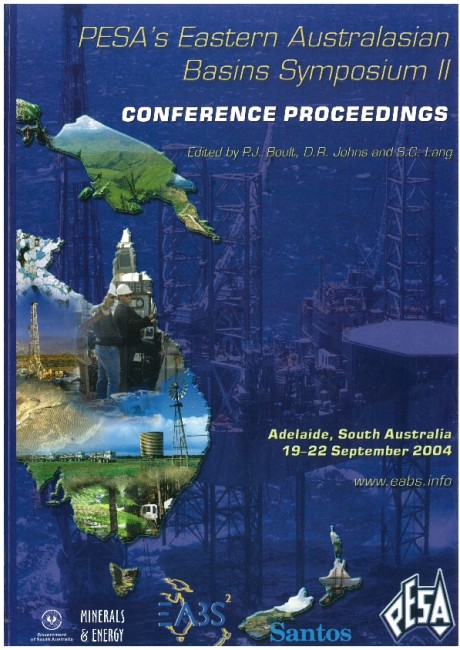Publication Name: PESA's Eastern Australasian Basin Symposium II
Authors: R. Sutherland, P. King and R. Herzer
Date Published: December 2004
Number of Pages: 18
Reference Type: Book Section
Abstract:
There are two significant events during the evolution of the South Pacific since 100 Ma that allow its history to besubdivided. The first event was the Late Cretaceous final fragmentation of Gondwana. Seafloor magnetic anomalies show that oceanic seafloor was being formed in the Tasman Sea and South Pacific by chron 33r (83-79 Ma), isolating the New Caledonia-Lord Howe Rise-New Zealand continent (SNZ). The second event is the Eocene (c. 45 Ma) reorganisation of plate boundaries that resulted in a new plate boundary through New Zealand. This change was approximately synchronous with spreading ridge reorganisations in the Indian Ocean, and with a change in motion of the Pacific Plate relative to hotspots, as manifested by the Emperor-Hawaii bend.
Most existing plate motion models imply (by omission) that SNZ became part of the Pacific Plate after break-up at c. 83 Ma. A consideration of the geometry of ocean crust southwest of the Lord Howe Rise-Challenger Plateau, and south of the Campbell Plateau, requires little or no deformation there during the interval 83--45 Ma, consistent with the southern margin of the SNZ continental ribbon remaining rigid. However, observations from within the isolated continent appear contradictory to the hypothesis that it was part of the Pacific Plate.
Seismic reflection and borehole data from the Taranaki Basin of New Zealand demonstrate that extensional
deformation continued until c. 60 Ma. In New Caledonia, rocks that were most likely formed at a nearby spreading ridge during the interval 90-55 Ma were emplaced from the northeast in Late Eocene time. Hence, geological observations suggest an extensional plate boundary existed between the Pacific Plate and SNZ. The modest amount of intra-continental extension in New Zealand (30-1 00 km), as compared to the fully developed spreading ridge near New Caledonia, implies greater displacement in the west and a relative rotation pole just east of Taranaki Basin.
If a SNZ-Pacific plate boundary existed during this time interval, then it must have connected southeast with seafloor spreading in the South Pacific. The region of prior connection is now located southeast of the Chatham Rise and in the Bellingshausen Sea, Antarctica. Interpretation of this region is complicated by plate boundaries that were active between oceanic plates (Bellingshausen, Aluk) and the Antarctic margin. Existing interpretations of seafloor data from the region are consistent with moderate SNZ-Pacific relative motions during the time interval 83-73 Ma, may allow some motion during the interval 73-63 Ma, and preclude substantial motion after 63 Ma.


